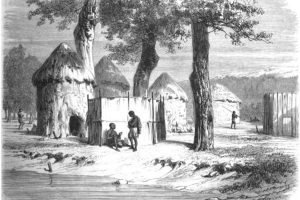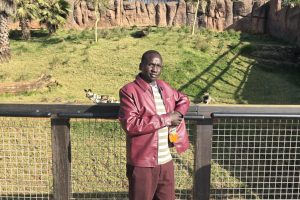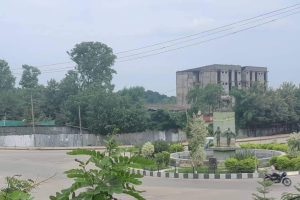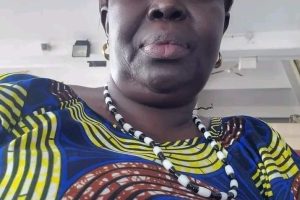First Published in Sudan Tribune
By a contributor
Gambella is one of ninth national regional states constituted by 1995 Ethiopia Constitution. The region is bordering the Oromia Peoples’ national and regional state to the north and east, Southern Nations, Nationalities and Peoples’ Regional State to the south and south east, South Sudan to the south-west, west and north-west.
Gambella is a multi-ethnics region with an overall population of about 306,000 (CSA, 2007). The borderland region is inhabited by five indigenous ethnic groups (Nuer, Anyuak, Mejange, Opo, and Kumo) – that officially fallen into the so called the ‘national minorities’ and the Highlanders or “Degenoch” – red skin people that comprised Oromo, Tigre, Amhara, Welayta, Sidamo, etc. that are from other regions of Ethiopia.
However, the latter also ‘signifies the Ethiopian state itself’ that reflected the central state dominance and they are locally known as Buny or Gela by Nuer and Anyuak respectively (Dereje, 2011) regardless of their ethnic origin.
Nuer, Anyuak, and Opo has trans-border settlement across both Ethiopia and South Sudan. Due to recent South Sudan crises the region is hosting more than 280,000 refugees who fled the conflict of which the majority are Nuer, Anyuak, and Murlee sheltering in the camps (UNHCR, 2016).
As proclaimed to be autonomous authority in the constitution, Gambella administration is exclusively run by five indigenous political and/or intellectual elites from state office of the president to ordinary civil class of security guard offices in the last two decades unlike the former regimes (pre – 1991).
Highlanders are represented with few seats both in the state council (parliament) and administration as host guest in regional political arena. In the region, both federal (national) and regional security bodies exist. The regional security apparatus includes Regional Police, Special Force and militias – the extended forces in Kebele (small local administrative unit) dominated and administered by the local authority that is a merely makeup of indigenous ethnic groups in its all forms.
Federal Police, National Rapid and Ant-terrorist Special Forces, and National Defense Forces are part of well trained and armed Ethiopian national security set up that are in huge number under federal authority command dominated by Highlanders. The structure of these institutions is extended to the district level in the region.
Unfortunately, concern has been increasing in local communities (Nuer and Anyuak in particular) as they have been experiencing severe attacks from invaders, cattle raiders or rustlers or you named them, coming from South Sudan.
These incidents usually resulted into devastating effect and brunt on the locals (Nuer and Anyuak) manifested in loss of several lives and livelihoods as well. Then, one would wonder and questioned the motive behind the discontent on security apparatus on territorial space in the present of both local and known strong national security organs ranked third to top powerful armies in Africa. The precise answer for this is paradox.
Let briefly replay the historical and recent conflicts development and security situations in the region that will flashlight for reader(s) to (dis)proved the relevance of such complaints to qualify for answer. As the objective is to show the level of security concern and operatives’ response, the cause(s) and effect(s) of conflicts will not be much a subject of discussion.
Dating back to 1898 when Emperor Minelik started his political expedition to annex the contemporary Gambella, the region has been trapped in various conflicts. The rivalry between the Nuer and Anyuak, and battles to resist the colonial powers – the British and Italy are good examples (Bahru, 1976 and Jal, 1987).
Domestic violence that witnessed ‘series large-scales raids’ among the rivalry ethnic warlords along the Jor corridor and Baro River persisted in 1911-1912 (Collins, 1971 and Bahru, 1976). Though the historical Ethiopian – British Boundary Agreement that annexed Gambella into Ethiopian signed in 1902, in 1910s and 1920s British still waged a military campaign to disarmed Anyuak.
Unfortunately, the Ethiopian central authority that has claimed the territory did not intervene instead they took the fight as comparative advantage for state shortcut to build its economy on direct supply of guns for ivory trading with Anyuak.
The move was perceived as opportunity by Emperor to create a buffer zone between Imperial Ethiopia administrations against rival British that was also competing to extend its colony. Resulted in good self and territorial defense by locals the British abstained from his quell policy.
On other hand, as old ethnics’ rivalry is reserved, Nuer and Highlanders (Imperial Ethiopia) were also promoting the trade relationship in exchanges of cattle with firearms (Zerai, 1971 and Bahru, 1976). Sadly enough, although the Ethiopian central-state has rejected to cooperate with colonial British to coordinate their forces in the war they ultimately took the same stick to force the submission of the Anyuak (Jessen, 1905 and Birhanu, 1973).
This center – periphery affiliation modality was inherited by Emperor Haile Selassie regime. Locals’ political integration of the claimed land was unthinkable and if it exists to was not for public offices. The Highlanders in mirror of state solely occupy the economic and the political arena.
As good news, Derge military junta overthrown the Imperialist Emperor Haile Selassie and took over power (1974 – 1991) with Marxist ideological orientation and adopted a project which Clapham referred as ensnarement (2002).
The system introduced hope to transform the centralized state function and reconstruct the center-periphery disjuncture damaged by few ethnic political elite hegemony and fascism with banner of one culture – one identity equation. The regime installed the nation’s state with one country – equal citizens’ slogan that will be equally powerful.
Nevertheless, the Junta values ended to be forceful resettlement, villigization, labeling of the citizens to be reactionary, anti-revolutionary, and subjection of people to red terrors execution and famine, forcible recruitment to army, and so forth.
Ethnics’ conflict persisted in 1975-77 in Gambella but the intensity coincidentally decreased afterward with no amicable solution from the centralized socialist state. This relief was not in fact for gaining peace but all were endangered by famous Ideology of Ethiopia Tikdeme or ‘Ethiopia First’ that was beheading people.
The system greased with high scale of corruption, enslavement, injustice, social and cultural exploitation in the region. Gravely enough, the military socialist regime response on national issues was off target and turn wild to hunt down hundreds of innocent civilians and patriots who tried to voice out weakness of state policies or resist the venom of authority.
One good example was the large-scale military campaigns that were off track in region in early 1980s that witnessed bloodshed on civilian in which I want to borrow winner phrase they use from Dereje, in so called ‘the victory over cultural revolution’ that dead body were used as trophy taken for public display (2011).
Moreover, Derge policy on Gambella political galaxy began to recruit local elites into power in 1978 and proclaimed the regional semi-autonomy structure in 1985 that did not match the people will but a prize that turned into social disintegration and insecurity as well.
Regardless of local political leadership, many villages were raided and burned into ashes by government militias and army. As a credit card to buy the regime loyalty, the leadership cooperated and directly involved in military assaults with SPLA/M rebel as tool on indigenous ethnics cleansing projects in 1980s that wiped out thousands of lives, tenth of thousands of cattle raided, harvests robbed, rape, social humiliation, displacement etc. which remained as the finger print of the Junta in Gambella today.
With EPRDF revolutionary victory, in May 1991, Derge was flash out, a turn that was popularly welcomed throughout the country. The power transition created new political landscape and constituted the ‘People’s Nations, and Nationalities’ States’ that Gambella fit into be one of them.
The so called Gambella Ras Gezt Astedader (A semi-autonomous administration) by Derge became “Gambella People’s National Regional State” in post 1991 Federalism structure (FDRE Constitution, 1995).
The new political system and people as well were pointing fingers on the past authoritarian military regimes for bad deeds that exploited the citizens’ rights and death conviction. Astoundingly, with no minutes of breath GPLM, the EPRDF affiliated and cousin in struggle, that took over leadership turned to use the state power and security apparatus as tools to clean the ethnic Nuer and others – settler Highlanders in 1991- 1992.
Thanks God! The internal fragmentation and dispute that faced GPLM camp fuelled by soured friendship with EPRDF resulted into two camps confrontation has freeze the GPLM instigated violence’s a year after.
As the result, the raining bullets stopped in the region that offered inhalation for relative peaceful breathes. However, in 1998-2002 inter-ethnic conflicts resumed its myth between old rivals. In 2003-2006, the conflict fashion changed into Anyuak vs. Highlanders and Anyuak vs. Mejinges. The region went back under cover of its old bloody blanket.
More frustratingly, Murle have also been taking advantages of the divide society in broken political culture and porous border to make their routes into the center to raids and rustles cattle since 1980s. Since the locals were armed by SPLA military, residual self-defence was workable – number of the casualty were limited to dozen but cattle were rustled in thousands almost every year.
However, the intensity and casualty start to break records in 2005 -2009. Remote villages in Jor, Makuey, Jekow, Lare, Itang, Wanthoa and Akobo districts were the soft target for raids, child abductions and cattle rustling in a trend which is not reciprocal for decades.
In 2008-9 for instance, villages in Lare and Makuey Woredas (district) were under series of raid by the armed Murle that left more than 30 people dead, several wounded, children’s abducted and more than 6,000 cattle rustled.
In all cases, neither immediate response nor initiatives for permanent solution was not observed from state in all level. However, recent attack (April 15) is first of its kind in half a century that killed 208 people and 108 children abducted in half a day.
But the raid is not the first of it is kind in term of cattle robbed. Having light from this synopsis, Gambella has been in series of internal and external conflicts with various causes, scales and dynamic for more than a century.
Under the Emperors regimes (1902 – 1974) the indigenous people were submerged in series of domestic violence and wars with colonial masters that would obviously seek the national state intervention but that did never happen.
Instead to join hands for sovereignty defense against aggressors with nationalistic stand and motive or to halt the escalating ethnic conflicts, the links between the borderland people and state were basically opposite characterized by supply of firearms that boost the militarization for self-confrontation in favor of the state businesses.
At a time Gambella were only good for its resources but not its people. The appeal of Gambella governor to central government for sales of unoccupied fertile land or as gift in 1960 (Dereje, 2011) can complement this argument.
Amazingly, the protectorate legacy eventually turned into inhumane practices of slavery that persevered for decades. The socialist Derge have totally come in with ‘carrot and stick’ policy that hatched to abiding with ‘economic and social oppression or bullet’.
It imprisoned the freedom with looting and insecurity instead for provision of the safe heaven to its citizens. The regime furthermore conspired with the SPLA/M rebel that subjected citizens in to enslavement and forced recruitment to their armies.
Levying heavy tax, imposing incompatible new social and cultural norms were the base practices. Mass villages incursions by both parties have claimed thousands lives, loss of tens of thousands herds, and displacement that imperiled the means of local livelihoods.
The Murlee raids in the region in 1980s, resulted in loss of dozens lives, physical disabilities, children abductions, mass displacement, and thousands of cattle rustled are few to be mention. Negligent of the national state government to meet its obligation to protect their citizens was the bigger problem.
The national army has turned into national threat and holdback their arms for looting the locals’ livelihoods but not for expected welfare and security. In a nutshell, the blame for all mess is thrown into the devil state political system of feudalism, and socialism styled by center elite’s political hegemony and dictatorship that has induced center-periphery services disparity in social, economic, cultural, and political domains.
In today EPRDF/Federal regime, despite of popular democratic setup throughout the country – as claimed to be. Gambella security situation continued to deteriorate and seem to be completely out of the national government radar in the past two decades.
However, on the cover page it seems to be hard and baseless still for someone to argue that the current causes of deprived security would not be gauged alike in the past regimes. That is where someone would start to wonder and ask why the state does not respond? One can start the investigation here.
In my view, local state security organs were always accused for direct or indirect involvement and instigation of conflicts in one way or another. Their institutional mandate was eroded and became defunct to meet the civilian demand for protection.
One of the top reasons is the long live weak state political leadership embedded in ethnic hegemony projects in public offices since 1991. Without going far, the local security involvement in 1990s and recent violence are blue prints to map the security failure. I believe readers will agree with me here. If so, what about the national government? Federal security apparatus have also failed to play substantives role to respond and distance itself to curb the depreciated situation for unknown reason.
They become like a Fire Brigade who comes after the smoke alarms went off and then accepts to act in some very selective ways which well imposed some other questions. For instance, in 1992 and 2003 federal authority operatives’ – Ethiopian Defense Force (EDF), responded with full pledged scale on Itang conflict provoked by self-proclaimed South Sudanese Nuer prophet called, Wutnyang, and in 2003 conflict (instigated by barbaric killing of 8 ARRA officials by Anyuak Bandits).
If these were possible, the next question would be to explain why national government failed to respond on other national and domestic threats which happen to affect Indigenous Gambellians? What are the prerequisites that draw the attention of the national security forces to intervene but not in others even for cross border threat from Murle?
The logic behind this is very tricky to file. However, in geometric theorem one would argue that the two cases have one attribute in common by fitting the indigenous Nuer and Anyuak against Highlanders figuratively. It would be very bitter to swallow if this proved to be true logic for intervention as it would speak back the center – periphery relation in the previous regimes that drawn the color line between fellow citizens.
It’s hard to believe the claim unless you convinced that federal authorities are also vaccinated with color identity venoms alike the local security forces that are usually blamed for lack of professional ethics, uncivilized act, and/or backward rationality.
This also would license the claim on their neutrality and open the road to generalize that all security organs in the region are inhaled by bad identity ambition to respond to public protection because they were taped being skipper of their ethnic mob during conflicts in the past. I have no prove but it’s open for debate.
To my knowledge, Federal government was invited to intervene on the matters beyond the regional control. The appeals were made several times since 2008 but it did never hold water on Murle. And for that fact the issue fit into federal authority mandate to handle the trans-national security and economic affairs as dictated by Ethiopian foreign and national security policy.
The 2008 Ngor villages attack was good example for this claim. It is unfortunate that the April 15, 2016 intensive Murlee militias attack did not also qualified for immediate attention and national respond.
Now you can judge to articulate the local’s frustration on national security affair and it would be definite to seek for explanation. What is National security threat? What does it mean to be National? Could we say the current and past regimes are wedding?
I am surprised by the Premier Desaleng stage and his government in last couple of weeks that addressed the issue as national threat on Medias which had never happens at least in last twenty years. It’s very great wakeup call and they deserve titanic thank for the account.
I want to use this opportunity also to thanks all Ethiopian citizens and beyond who have paid their respect and sympathy for the victims and the local administration. It was really excellent hug, it sounds national, and I am confident that Gambella peoples are happy for your recognition and words of condolence.
Nevertheless, I am still doubtful of the government words, actions and possible implication on the following statements. “… The Ethiopian forces will follow the Murle armed men into their territories from where they came from in South Sudan and to rescue the over 100 kidnapped children. Desalegn … announced that his country was launching a military action against the hideouts of the organized Murle militia groups inside South Sudan to rescue the abducted children.”
The Premier also added that “… the Ethiopian forces are only waiting for permissions from Juba government to carry out the cross-border military operation inside South Sudan’s soil, which will target Murle’s areas.” (www.Sudantribune.com).
However, these separate statements were released 2-4 days after the attacks whereby the culprits have not yet crossed back into South Sudan. The official releases are completely contradicting with reality.
Besides, the attack happened in the vicinity of less than 12kms from towns where EDF garrisons were located. What hinder the forces immediate response in raids that last for more than five hours? What is the motive to pursue the perpetrators of the massacres of civilians inside South Sudan territory instead to fight them within Ethiopian territory?
In my opinion, Gambella is one of the poorest regions in Ethiopia not in term of resources but the way its economic, political and security affairs is being handle. The existing security situation is not just life threatening but also have imposed poverty sanction on indigenous. People are deprived of their livelihoods much more then when there were no state functions.
Why should state talk about poverty in a region where irresistible Murle use to rustle 2,000 cattle every year on average. It is an illusion and irrational to see this in a face of strong defense that is invested for peacekeeping in other countries – Somalia, Sudan, and beyond.
The words were just a political rhetoric to please the helpless society with involuntary mission despite of the recovery of some abducted children. Where are the cattle? What would the kids feed after all?
For that matter one could also argue that it was not a surprise attack but lack of serious attention of national security operatives as two separate attacks happened in 2-3weeks in Makuey (Adura) and Jor districts earlier with no devotion.
Any security organs would have been mindful of any other possible incidents but no precaution or rescue plan was put in place. Equally important, I am not convince for mobilizing tanks and bombs to Murle communities in Boma state populated by innocents this will amount to international criminality that will contradict our aim.
As Hyden stated, government do not just make policies, they are also responsible for creating a climate in which people enjoy peace and security (2002). Murle has never been a federal agenda despite of the regional appeals for years. I am totally loss of national security operation format – Social boundary or national sovereignty?
In my conclusion, Federal authority must bring back all the kids and cattle’s and adopt a sustainable solution for such criminals. Failures to shoulder the task script the ‘war within vein’ and Gambella will infer a National State with no National Defense.









